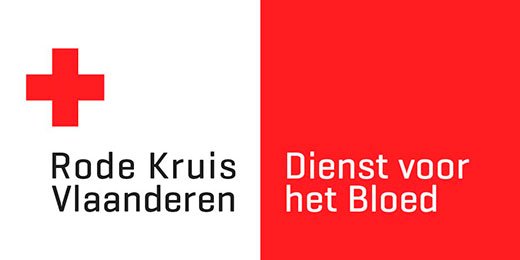Reconstituted whole blood for exchange transfusion
This product data sheet describes a patient-specific blood product that is only prepared to order in the context of specific indications. It is intended for a specific patient and is requested through a separate ordering procedure with the order form for patient-specific blood products. To ensure timely delivery, it must be ordered 24 hours in advance.
Product Codes
Code 'Blood Service'
E4076V00
NIHDI Code
Hospitalized: 752 463 + 752 441
Non-hospitalized: 752 452 + 752 430
Preparation and composition
Reconstituted whole blood is prepared by pooling a delegated erythrocyte concentrate "adult," irradiated from blood group O and a bag of virus-inactivated plasma from blood group AB. The erythrocyte concentrate is no more than 5 days old and negative for the antigen against which the causative antibody of fetal hemolytic disease is directed. Secondarily, the selection of the erythrocyte concentrate takes into account the rhesus D type of the newborn. The storage fluid (SAGM) is removed from the erythrocyte concentrate after which the hematocrit is restored to 0.40 to 0.50 by adding the thawed virus-inactivated plasma.
Indications
Reconstituted whole blood is mainly intended for exchange transfusion in neonati, usually to treat HDP (hemolytic disease of the newborn).
Other possible indications are severe hyperbilirubinemia of nonimmune origin, sickle cell crisis and protozoan infections (malaria, babesiosis) with high parasitemia.
Contra-Indications
Do not use reconstituted whole blood for exchange transfusion in case of previous allergic reactions to methylene blue or its derivatives.
Transfusion of reconstituted whole blood for exchange transfusion is contraindicated in patients with G6PDH deficiency.
Dose and instructions for use
Dose
Classically, a double volume exchange transfusion is performed, meaning that twice the child's blood volume (2 x 80 ml/kg) is exchanged. Usually one unit of product reconstituted whole blood is sufficient for this purpose.
The rate of administration should be carefully observed to avoid impermissible changes in blood volume.
Special precautions
The reconstituted whole blood must still be crossed with a serum sample from the recipient (in case of HZP: from the recipient's mother) by the laboratory of the requesting hospital before administration.
Immediately prior to transfusion, it should be verified that the product to be administered is intended for the patient in question. The product should be warmed during administration using a blood warming device validated for this purpose. If Ca-gluconate is administered to prevent hypocalcemia, this should be done by another route of access.
An irradiated blood product is not radioactive and can be manipulated without danger by the nursing staff.
User Manual
Aseptic technique should be used during transfusion. Administration sets and filters should be replaced in a timely manner in case of multi-unit transfusion. Any residues are disposed of as medical waste. Based on the serum bilirubin, the procedure can be repeated if necessary.
Possible undesirable effects when the product is administered
With exchange transfusion, particular attention should be paid to the symptoms of citrate toxicity (hypocalcemia, acidosis). In addition, the general side effects of transfusions may also occur: mainly chills, fever and symptoms of allergic nature such as urticaria and itching.
Serious, potentially fatal, adverse reactions include: circulatory overfilling with pulmonary edema, transfusion-related acute lung disease (TRALI), bacterial sepsis,
hemolytic transfusion reaction and severe allergic reactions such as anaphylactic shock.
Further occurrences may include: posttransfusion purpura, chemical disturbance in massive transfusion (hyperkalemia).
Through blood and blood derivatives, infections can be transmitted: with viruses (B19 parvovirus, CMV*, HAV, HBV, HCV, HIV,...), with bacteria (syphilis), with protozoa (malaria, leishmania, trypanosomiasis) and with unknown pathogenic agents.
* Deukocyte-derived blood products are generally believed to virtually eliminate the possibility of CMV virus transmission due to elimination of the white blood cells. For indications of the use of blood products derived from donors serologically negative for CMV: see under CMV-negative blood products.
Medication and other interactions
The reconstituted whole blood should not be mixed with drugs or infusion fluids. Under no circumstances should calcium-containing and concentrated glucose solutions be added to the erythrocyte concentrate or administered through the same line.
Preservation and stability
Reconstituted whole blood should be stored between + 2 °C and + 6 °C and should not be used beyond the storage time indicated on the label. The maximum storage time of reconstituted whole blood for exchange transfusion is 24 hours from preparation, and 12 hours from irradiation.
Reconstituted whole blood should not be used with signs of damage or decay.
Safety of products prepared from human whole blood
Blood is drawn from voluntary, non-remunerated donors, selected in accordance with the standards laid down by Belgian legislation and the procedures of the Blood Service of Belgian Red Cross-Flanders.
With each donation, the donor is inspected by a physician and tested for antibodies against the human immunodeficiency viruses (anti-HIV-1 and HIV-2), for antibodies against the hepatitis C virus (anti-HCV), for the hepatitis B virus surface antigen (HBsAg) and for antibodies against Treponema pallidum. HIV, HBV and HCV are also detected by NAT testing.
Products from donations with positive test results are destroyed.
When products prepared from human blood are administered, transmission of an infectious agent cannot be completely excluded. The residual risk of transmission of HIV, HBV or HCV by unit transfusion is estimated at 1 in 4 to 6 x106, 1 in 0.3 to 1 x106 and 1 in 700,000, respectively.
Transmission of as yet unknown pathogens cannot be ruled out.
Episode
By medical prescription, after order.
Order at least 24 hours before the desired delivery time.
Last updated 11/04/24.
